I am very grateful to the staff at Darcars Chrysler Dodge Jeep Ram of Silver Spring for letting me test drive a brand new Charger. For the sake of privacy, I will not identify by name the representative that I drove with.

What is it?
The Charger is a car governed by the question of "why not?" Perhaps every single aspect of the Charger, and its sibling the Challenger, can be explained by asking "why not". Why not give it a longitudinal V6? Why not make it all wheel drive? Why not give it an eight-speed automatic transmission? Why not give it an option for a seven hundred horsepower V8? Why not?
The LD-platform Charger family (including the Chrysler 300)is the only sedan that Dodge sells, and concludes the lineage of Dodge family sedans. Say goodbye to the infamous Aries, the adorable Neon, and the forgettable Avenger. Nowadays, Dodge brands itself towards performance muscle cars rather than sporty yet affordable everyday drivers. The absolute base-level Charger starts with a Pentastar V6 that makes just short of 300 horsepower, and the AWD option ups the power output to about 303hp, which I suspect is to help absorb the added mechanical resistance of the AWD system.
I miss the Neon.
What is it like?
The Dodge Charger, as Dodge's only sedan, has a lot to live up to, not only in terms of performance, but also in terms of comfort and practicality. The Durango is too large for many people, the Challenger rejected outright because of its nature as a flagrantly offensive muscle car, and the Journey and Grand Caravan only chosen if you really want a Dodge but can't get the husband to agree to anything too scary. The Charger thusly has to be comfortable and practical, yet still high-powered and aggressive. Practical comes from the huge trunk, spacious cabin, and 60-40 folding rear seat. Comfortable comes from an extremely nice steering wheel, ergonomic controls, a sophisticated infotainment system, and neatly upholstered seats that hug the hips and generally support passengers well, though I can't comment on their viability for long road trips, as I had about 20-30 minutes with the Charger.
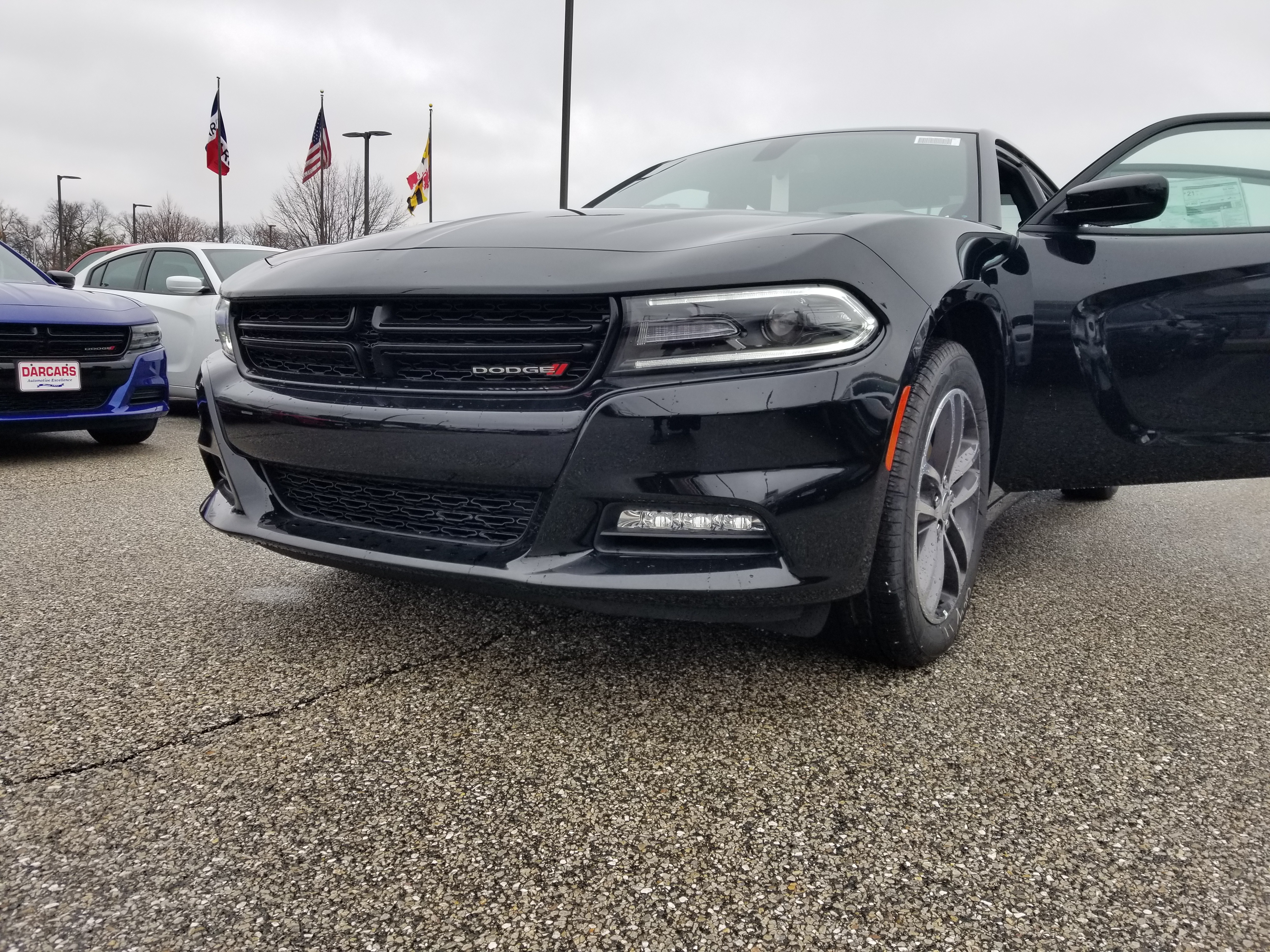
The SXT Dodge Charger should not be confused for a soft and lazy "performance" family sedan-it is a legitimate sports car, and the driver is handily reminded of this whenever the engine turns over. Particularly with the V8 versions, the engine growl is quite noticeable, and makes the car sound downright mean. The upper-trim R/T version also sports a different, more aggressive grille, that discards the classic Dodge "crosshairs" grille design for something a little meaner and lower-profile. I think this is quite unnecessary, considering how aggressive the normal SXT already looks! Fortunately, the cabin is quite quiet for normal driving, and the 8-speed transmission means that the engine will probably not be turning annoyingly fast for most highway cruising. As mentioned earlier, the steering wheel is extremely comfortable, and is even heated, meaning that the days of driving with gloves on cold winter mornings are well gone. The shifter, cutely emulating the T-bar custom shift levers of old, is also very nice to use, being more convenient to hold and move than the extremely bulky, bricklike shifter of some Audi cars. The driver feels completely at home with one hand on the wheel and one on or near the shifter.

The seats are surprisingly tight; they are not lacking for space, but rather, the bolsters are extensive, which is great for hard cornering, but would likely be annoying for people with wider hips and sensitive spines. The Charger is definitely ergonomically designed for younger people. Today's smartphone user won't find the Charger's infotainment system as outdated as they might find a V8 muscle car. The screen is pretty big, and has all the standard connectivity features, as well as an electronic interface for radio, local media, I assume navigation services, and HVAC controls. The menus are somewhat difficult and complicated to navigate,but I imagine that this comes with practice. Visual design of the menus is acceptable, but not exactly beautiful either. Compared to the Audi A4's extremely pretty graphics, the Charger's feels quite mundane, and downnright industrial. Only the most basic functions are reserved for dedicated hardware buttons, like volume, stereo power, defrost/AC. and recirculation controls: this is because the screen can be turned off at will. I was extremely pleased to find this, as too many cars make it too difficult to hide or disable the main display. However, the media controls are located in the same button cluster as the drive mode, flashers, parking assist, and traction control buttons: ergonomically it makes sense to put all the most-used buttons together, but I imagine that in a pinch it could be possible to disable traction control or parking beepers because you just wanted to turn the screen off. That said, the console controls are easy to understand and use, and the infotainment system is quite good. Interior styling is acceptable, but ultimately does not stand out. The exception is the upholstery, which, in the car I drove, had brown leather seats and door details, which looked flashy and interesting without being too gaudy. Fit and finish of the interior is good, and everything is nicely padded, but the actual styling is nothing to write home about. That said, build quality is generally good, and every fixture feels reasonably solid and well built; the buttons feel slightly cheap and plasticy but do not detract from the user experience in general. The aforementioned parking beepers as well as reverse camera and big mirrors are a godsend-the Charger is generally hard to see out of. Visibility could be much worse, but the low roof and thick pillars detract noticeably.
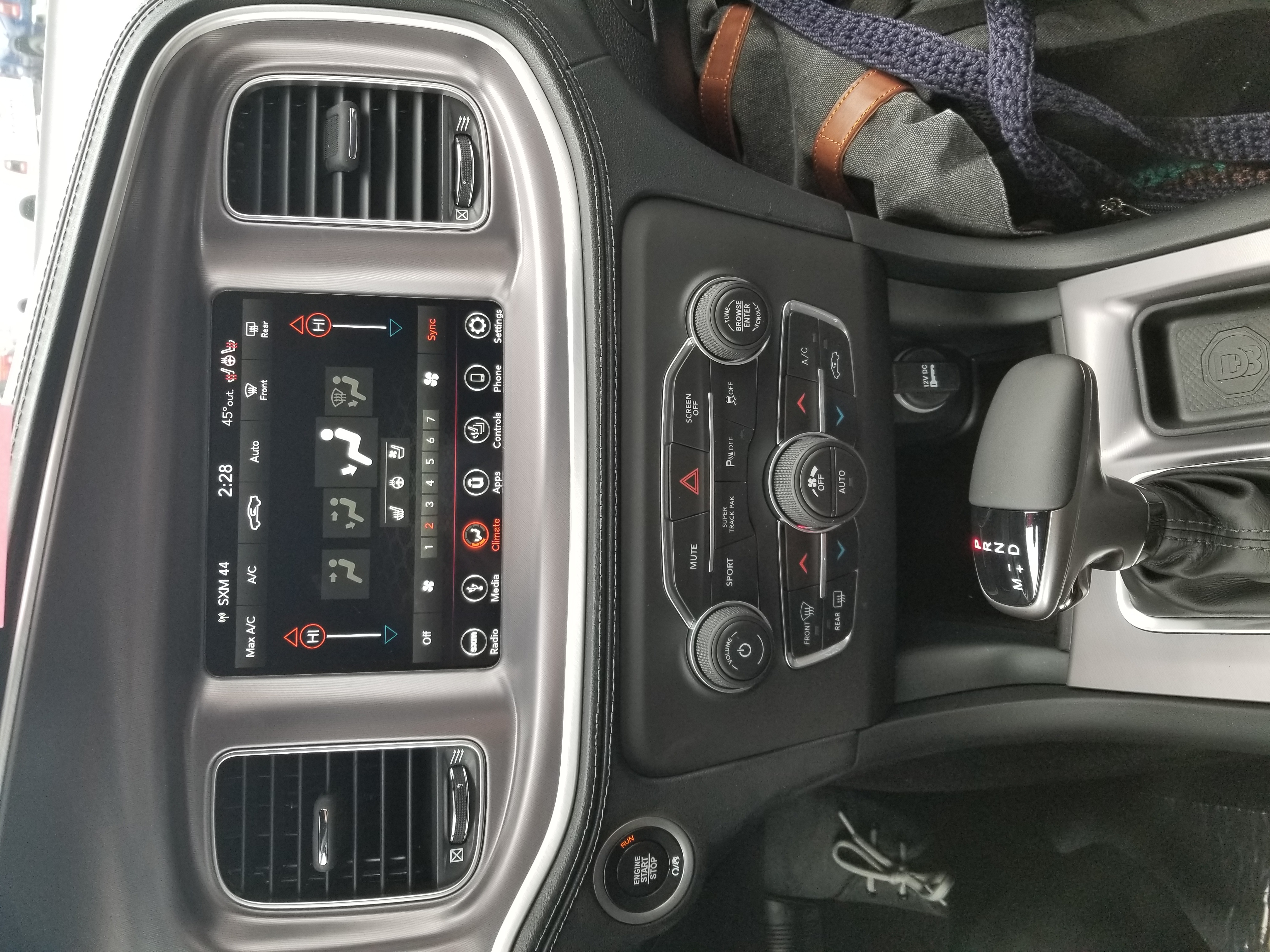
The base-level Charger's styling isn't too obtrusive. It barely stands out, but its tall trunk and huge size are hard to ignore. That said, it looks far more poised than the LX-platform version of the mid 2000s, which felt more bulky and clumsy. For the most recent styling refresh, Dodge slimmed down the grille and headlights to lower the front end and give it more of an aggressive sporty rather than straight muscular look: however, mechanical updates seem to have been purely oriented towards classical muscle car performance. This car is very interesting to drive.
How does it drive?
The Charger is perfectly calibrated to seem powerful and sporty to the casual driver without being too scary: we will see later that this is perhaps its most important quality. The cabin is quite well sound-insulated, and for normal driving, the engine's low rumble isn't too obtrusive. Steering feels a little loose with normal driving, but this is adjustable, as is transmission behavior, throttle response, and one or two other driving parameters. With the included backup camera, adaptive cruise control, and hefty power steering assist, the Charger is an extremely easy car to drive. Its wide performance envelope adds to the reassurance it gives to casual drivers-the average person would be quite hard pressed to get the Charger to break loose in a turn!
As would be expected from a modern Dodge, the Charger's muscle lives up to its branding. The stock 300hp Pentastar is better referred to as a "mill" or "plant" rather than "motor" or "engine"-torque comes on at 2500rpm and simply fails to drop off all the way to redline. Short-shift the Charger so its engine is turning below 2000rpm and acceleration becomes extremely sluggish, but the engine does not feel like it lugs or complains at such low speeds. An "eco" mode for the Charger would do it well-it's not as if the car is wanting for gears! That said, nobody buys a Charger to hypermile it. The 3.6L prime mover does truly want to rev though, and the transmission logic reflects this. I expected normal driving to have early and frequent upshifts, particularly when setting off, but the transmission optimizes more for good speed control than efficiency; slight acceleration takes very little pedal pressure, and the transmission never seems to hunt for gears. 300hp seems like overkill for a base-model sedan, but then again, what muscle car driver would accept a straight four? (my sincere apologies to Ecoboost Mustang drivers.)
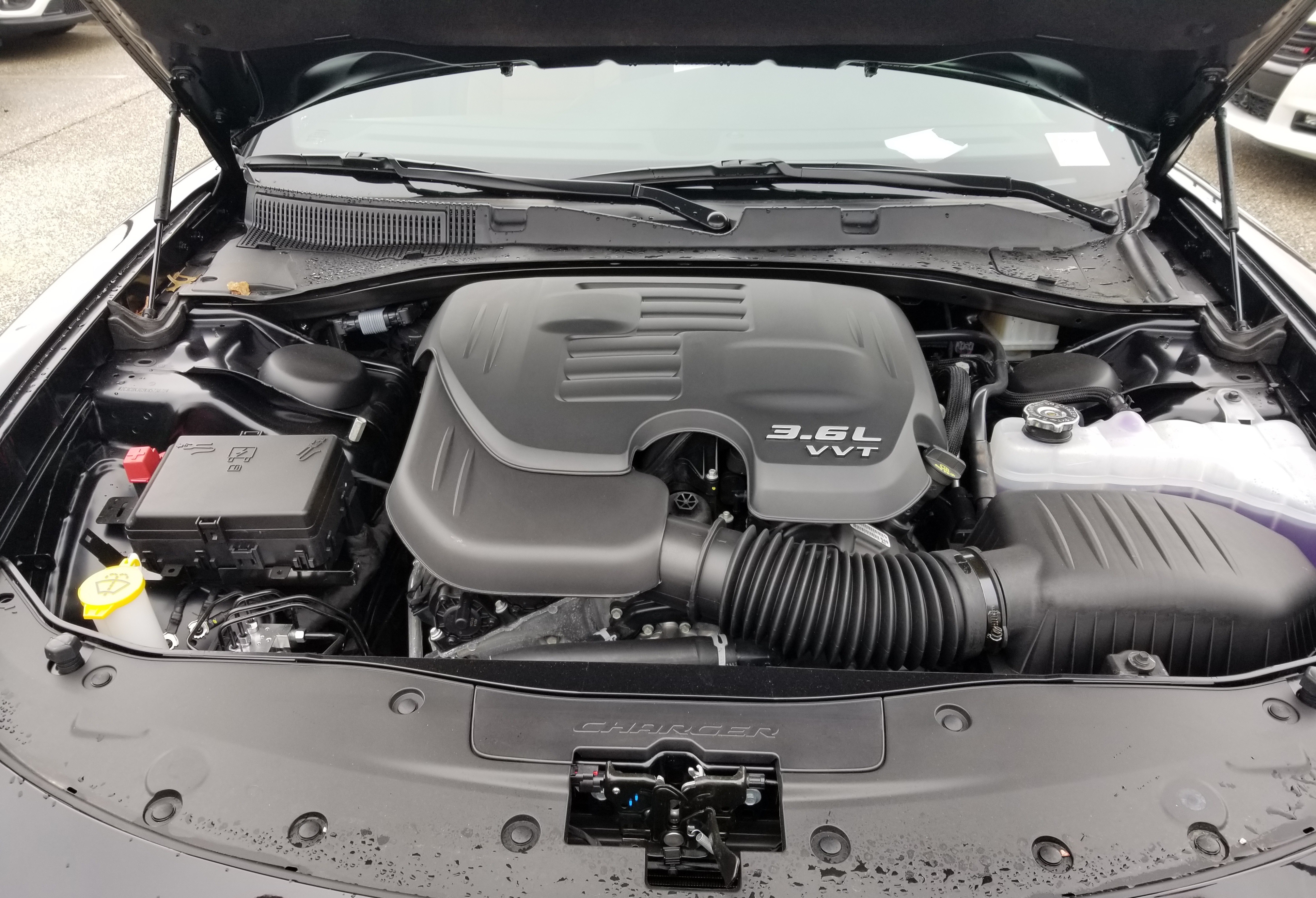
The engine bay is quite large, and with the V6 engine, most parts of the engine are actually clearly visible-the engine bay feels more like a space to work and less like a solid block of machinery. However, the V8 versions get a little crowded. Doing simple tasks like replacing the serpentine belt, oxygen sensors, and oil should be pretty easy, and even though the battery is under the trunk (probably to give space for the V8!), there is a jump point stand-in under the hood, letting you jumpstart the car without taking out everything in the trunk.
The shift lever thankfully has separate detents for PRND-M modes, unlike some cars that have you bump the stick forwards, backwards, and sideways to choose gears: the shifter is quite traditional and takes no time at all to get used to. Manual shifting can be accomplished either with the shift lever (bumping it forwards and back) and with the paddle shifters on the steering wheel. These are generously sized and located well, but unfortunately are attached to the steering wheel, meaning that they only work best for shallower turns like highway cruising and racing. Shifting manually with the shift lever is slightly awkward because its throw was slightly longer than I expected: you have to bump the Charger's shifter farther to select gears, which slows down the manual shifting process. The transmission does not lag too long for manual shifts, but it's no dual clutch gearbox obviously: Rather, it's a ZF 8-speed conventional automatic. Overall the transmission is easy to use and does a very good job of getting power on the road; speed control is precise, normal acceleration and cruising are intuitive, and the generous number of gears gives the driver more options for higher-performance driving.
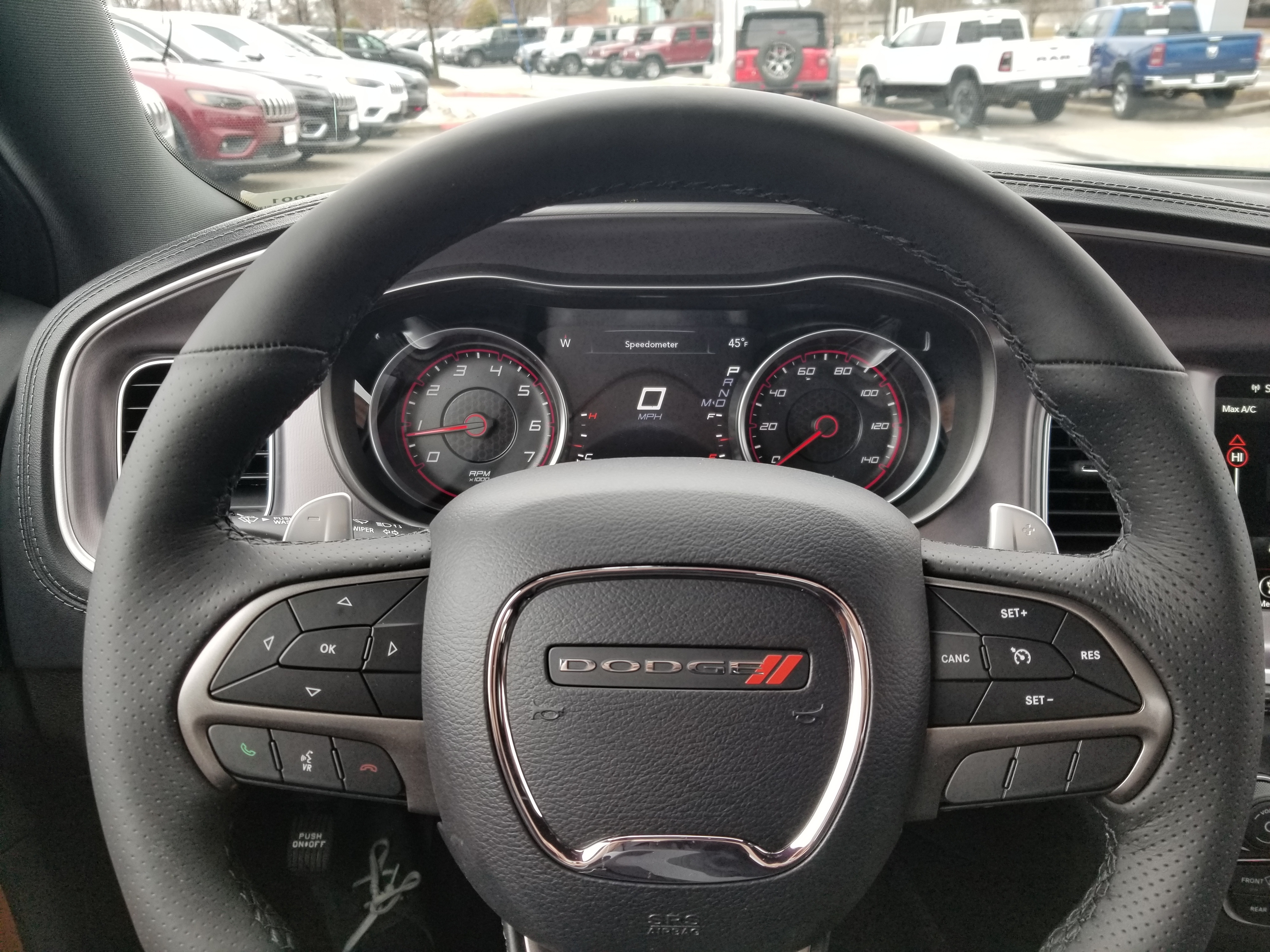
The gauge cluster has hardware tachometer and speedometers, and then uses a multifunction display for everything else, controllable with steering wheel buttons. Among other options for the central display are speedometers (mph and kph), tire pressure monitoring, and fuel economy displays, though the last one is of dubious importance in a car like this. I find the styling of the gauge cluster a little tacky personally, but it fits right in with the rest of the console and dashboard styling, and gives the driver all the information they need to know.
The age-old joke made at the expense of muscle cars and their drivers is that they can't turn and can't stop. The Charger does try to break this stereotype, though the optional hemi V8 weakens its argument substantially. The suspension is extremely well tuned, and it soaks up nasty bumps and tight turns alike. In fact, the Charger is possibly the most comfortable performance car I have yet driven. Cornering feels confident and body roll is not too bad, but there isn't too much feedback through the steering system, making dynamic driving feel numb. The steering is loose, but can be adjusted for the "Super Track Pak" driving mode, allowing three gain levels. I was very pleased by this, as I prefer extremely sensitive steering over loose and comfortable. The turning circle is impressive for such a large car, and U-turns and parking are stress-free. The brakes are beefy enough, but their effect is somewhat damped by the sheer mass of the vehicle: it weighs over two tons, and you feel that weight for every single second you brake or turn. The Charger is not a lightweight sports or track car: it is heavy, powerful, comfortable, and easy to drive, making it more of a grand tourer than sports sedan. The Charger would be a great car to do road trips in, and I suspect that it would be quite pleasant for longer commutes as well.
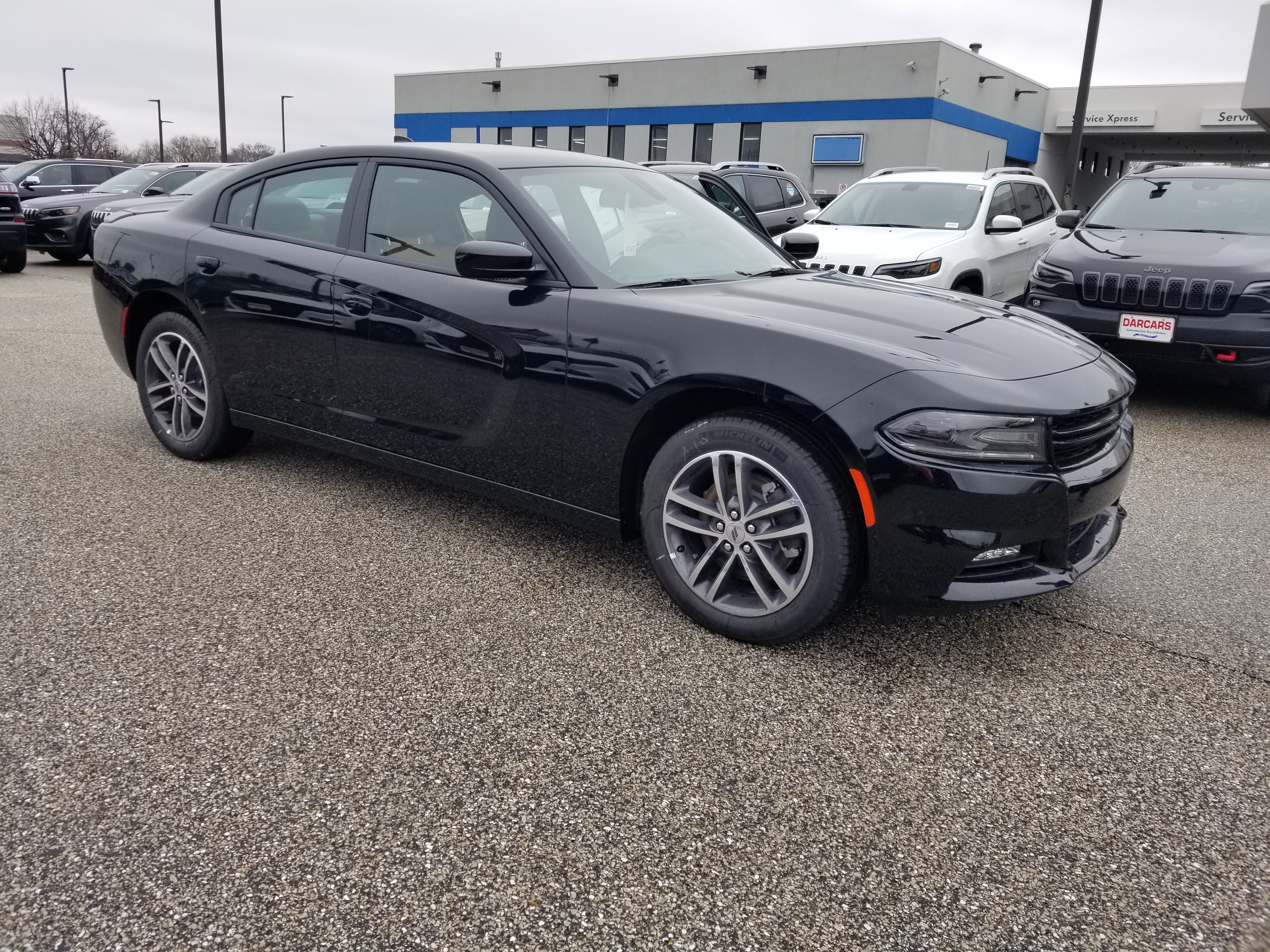
Overall, the Charger is pretty well put together, though its focus on engine power is obvious. As someone who cares more about cornering, sensitive controls, and light weight, I personally can't enjoy it too much, but I will admit that the eager roar of the engine and the commanding stance and ride are intoxicating.
Who is it for?
The Charger is, at its core, an extremely hedonistic car. Its engine is constantly begging to be allowed to rev, and the paddle shifters sit invitingly under the driver's fingers. The Charger is a car that, at its core, craves acceleration, speed, noise, and excitement. Anybody who wants to own a Charger and truly, actually appreciate needs to respect just how badly their car wants to just go. Normal driving is effortless, provided the driver remembers the sheer size of their car, and the suspension and interior fittings make the driving experience quite comfortable. But who wants a big, heavy car that burns a lot of gas and begs to be put into sport mode? The short answer is anybody who wants a nice, fast car that they don't have to think about. Americans really like cars that give the feeling of control (why else would SUVs sell so well?) and the Charger completely sells the narrative of a Powerful car that can't be stopped by puny things like weather, or potholes, or gas prices. The Charger is a performance car that's friendly to less confident drivers: with a Charger, you don't have to love driving to still have fun behind the wheel and feel at home at car meets. And it's comfortable enough that you can pick up the kids from soccer practice afterwards.
The Charger is the ultimate Big Car: it doesn't have to corner like a GTR, it doesn't have to stop on a dime, and it doesn't have to be pared down to the point of impracticality. Anybody can enjoy a Charger because anybody can appreciate a big, loud, engine and easy handling. The V8 options are straight out of Mad Max: Fury Road however-their worship of the V8 is palpable, and with a car like the Charger, that worship fits perfectly. The person who drives a Charger is the person who understands that real life and real cars don't care about numbers, ratios, and Nürburgring lap times. It doesn't matter that it's a full two tons, it's comfy and spacious. It doesn't matter that the lower-spec versions can be trounced by Johnny Tuner in his JDM Skyline: even the V6 Charger is by no means a slouch and the car is constantly, desperately eager to please, and that blind enthusiasm is hard to come by. It doesn't matter that the car feels anachronistic compared to the hyper-specialized sports cars of tomorrow: when you're in the Charger, it's 1973, you have one hand on your Hurst T-bar shifter, the other on your black leather wheel, and Popcorn by Hot Butter is still on the air. The Charger doesn't need to look forward, when the past felt great and the present is so darn fun.
It's okay that the Charger is hedonistic, and tacky, and old-fashioned. It's a car that's always having fun, and that's okay. You don't need a crossover or SUV to get a car that makes you feel in control, and you don't need something tiny, hard to get into, and painful to drive if you want serious performance. It's a muscle car, and in 2019, that's still just fine.